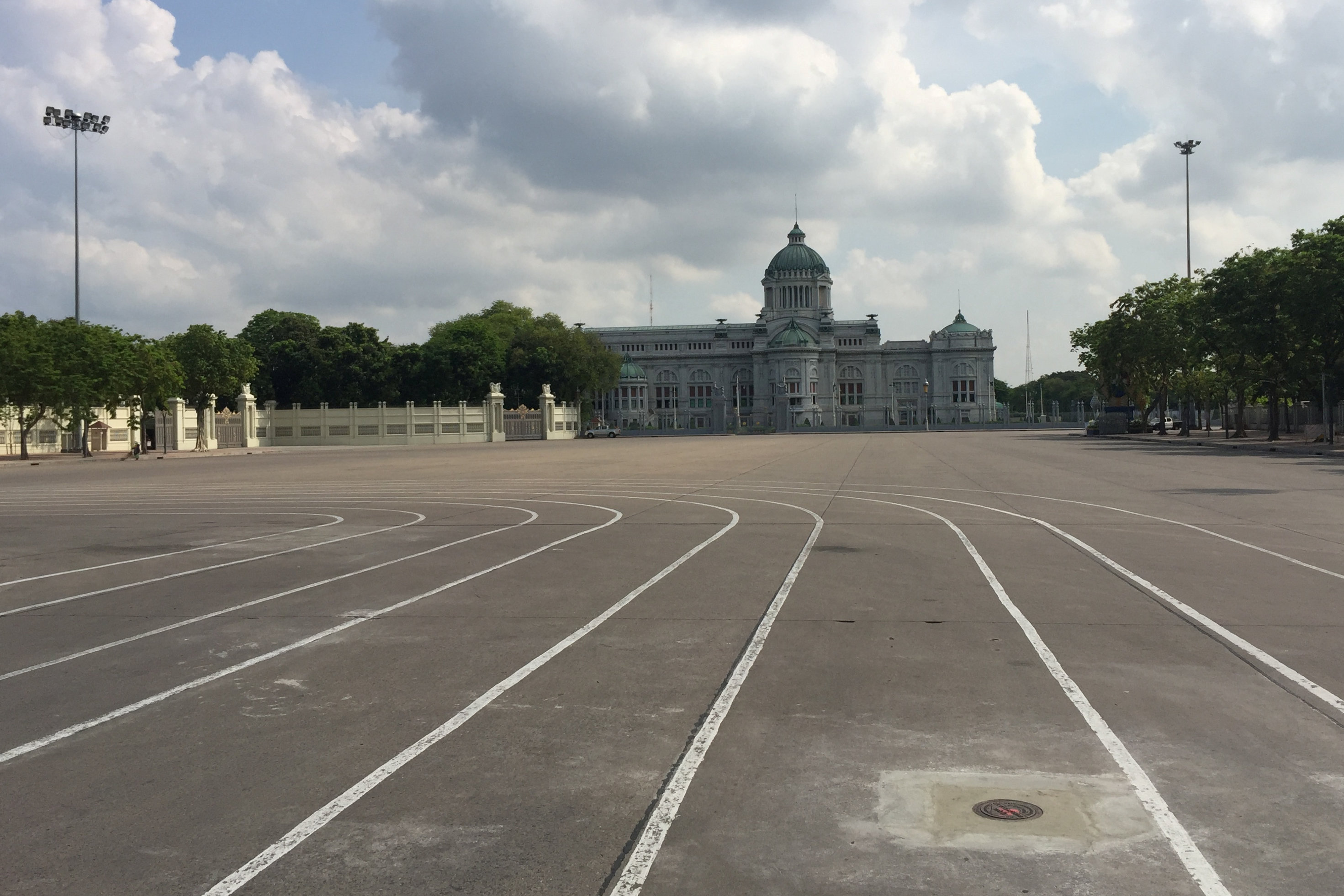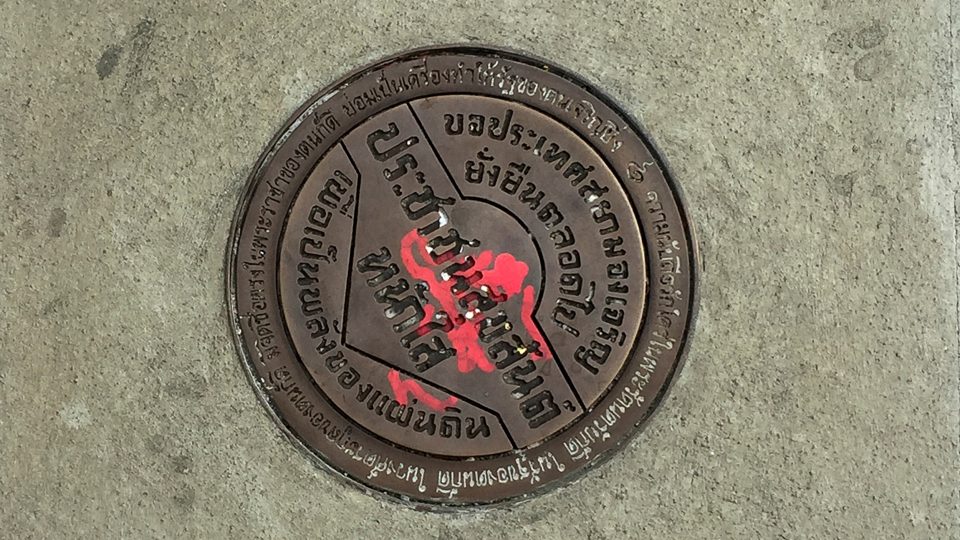Thailand’s prime minister on Tuesday warned people not to protest against the mysterious disappearance of a plaque commemorating the end of absolute monarchy, a theft some activists see as a symbolic threat to democracy.
The plaque was embedded in a central Bangkok square, marking a spot where events unfolded in a 1932 coup staged by Western-influenced young civilian bureaucrats and army officers to end absolute monarchy and establish a parliamentary system.
The coup, also known as the Siamese Revolution, marked a turning point in Thailand after nearly seven centuries of absolute monarchy, and is seen as the birth of its democracy.

The hubcap-sized brass plaque, with an inscription proclaiming the establishment of a constitution in 1932, was found to be missing on Friday, police said. It was replaced by one celebrating the monarchy.
No one has claimed responsibility for removing it.
Prime Minister Prayuth Chan-ocha said police were investigating and warned pro-democracy activists against a plan to gather on Wednesday to protest.
“It’s no good whatsoever to ask for it back tomorrow,” Prayuth told reporters at the Government House in Bangkok.
“People need to know the laws. You can’t just claim rights and liberty and do everything.”
The ruling junta has taken a tough approach to critics since taking power in a 2014 coup. It has banned political gatherings and has charged some activists with sedition.
Prayuth, a staunch royalist, has also been accused of taking a hard-line approach to critics of the monarchy and the military.
The square where the plaque went missing is close to parliament, to a royal throne hall and to an army barracks. The area is also surveyed by several police posts.
The government has said it would not take responsibility for it.
“Please don’t make us solve issues that are not a matter of life and death,” Prayuth said.
Activists plan to gather at a police station in the Dusit district where the plaque was located to file a complaint, despite a ban on gatherings of more than five people.
The deputy national police chief said police would only investigate the plaque’s disappearance if its owner or an aggrieved party filed a complaint.




